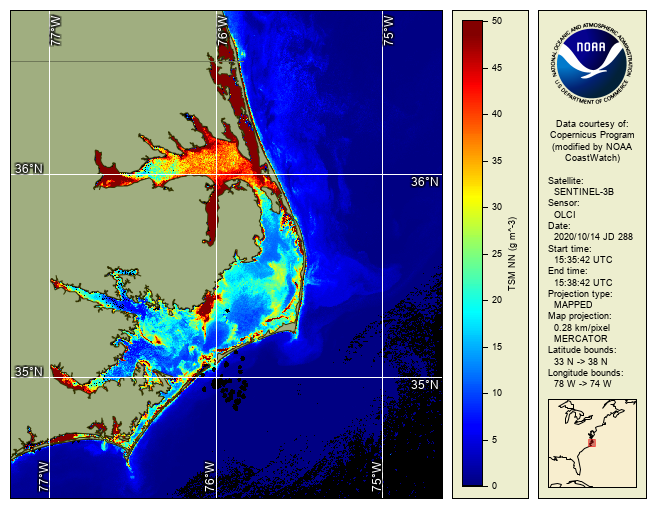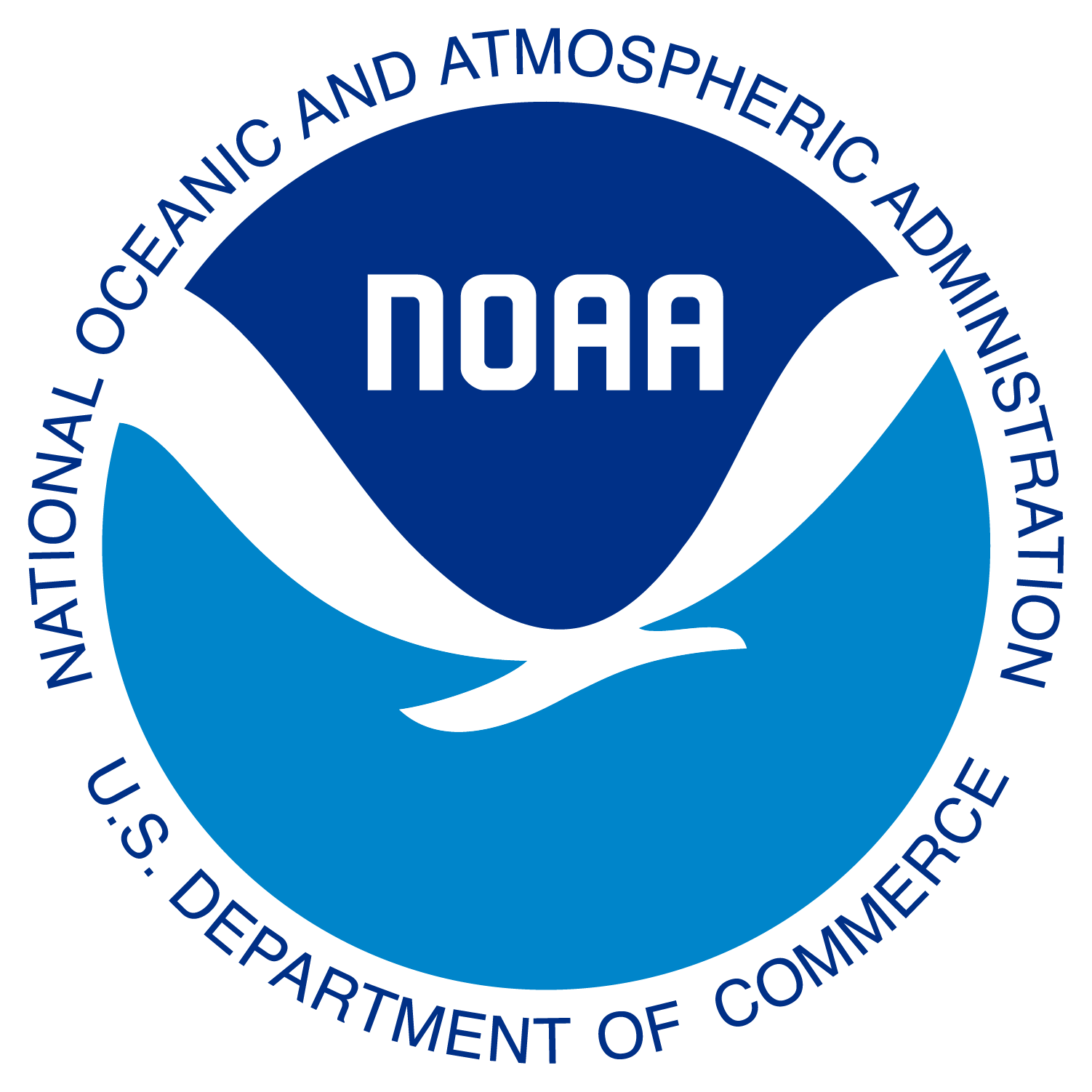 |
|
OLCI Total Suspended Matter (TSM)
Figure: OLCI Total Suspended Matter, North Carolina Outer Banks, Oct 14, 2020, 300 m Satellite-derived total suspended matter (TSM) is a measure of the concentration of particulate material in the surface water such as mud, silt, and other fine-scale debris, including both organic and inorganic fractions. CoastWatch provides TSM products in near-real time from the Ocean and Land Colour Instrument (OLCI) on-board the European Sentinel-3 satellites, courtesy of the European Union's Copernicus satellite program. Sentinel-3 is a multi-instrument and multi-satellite mission to measure sea- and land-surface temperature, ocean and land color and sea-surface topography. Sentinel-3A was launched on 16 February 2016. Sentinel-3B was launched on 25 April 2018 with the same instruments. See the European Space Agency (ESA) Sentinel-3 website for more information. The Sentinel-3 satellites have a mid-morning local overpass time (roughly 10 AM local time). The Ocean and Land Colour Instrument (OLCI) is based on heritage from ESA's Envisat satellite Medium Resolution Imaging Spectrometer (MERIS) to measure visible and thermal infrared radiances. OLCI has 21 bands at wavelengths from 400 nm to 1020 nm, a spatial resolution of 300 m, and a swath width of 1270 km. With both Sentinel-3 satellites in orbit, the combined swath width of the two OLCI instruments allows near global coverage to be obtained on a daily basis. TSM is generated using the MERIS 1999 Baseline Atmospheric Correction and the OLCI neural net TSM algorithm (Hieronymi et al., 2017). CoastWatch converts ESA's TSM swath data (Level-2) into mapped gridded files (Level-3), including mapped swaths and daily composites. EUMETSAT (2021) states that TSM product performance is variable between Sentinel-3A/OLCI and Sentinel-3B/OLCI. Product validation with in situ measurements is preliminary. The products should be considered experimental and users are cautioned that TSM values may be quite inaccurate. Data representing the above quality begin in near real-time operational processing on 16 February 2021 (i.e. Collection 3). Earlier data will be of lesser quality. Reprocessing of OLCI-A and -B mission data from the start of the time series (to ensure consistent quality across the time series) is in preparation by EUMETSAT. Please consult the EUMETSAT Ocean Colour Services website for the most recent OLCI Level-2 Ocean Colour Product Notice and Collection Report for important ocean color quality information.Data Access
References: |
|

